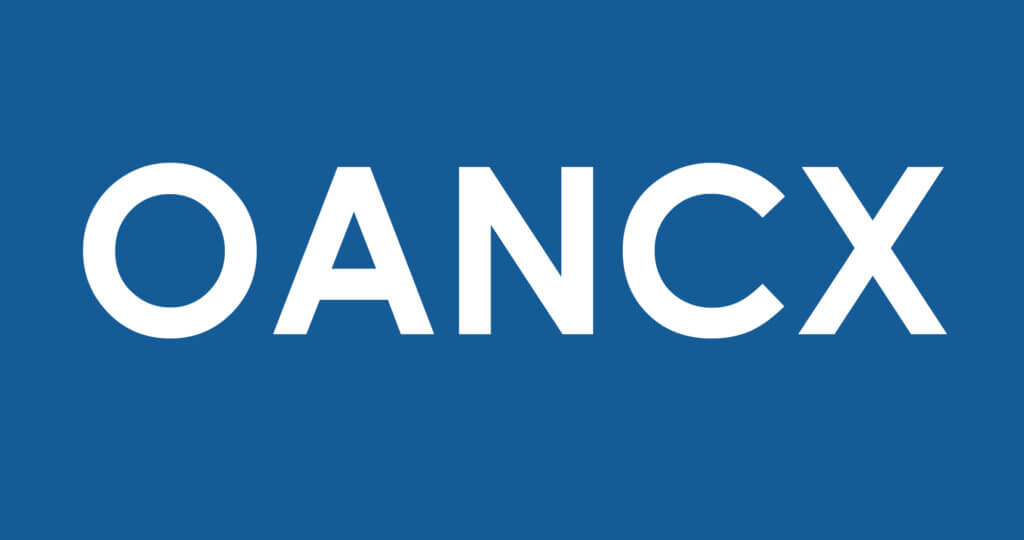Oakmark Bond Fund – Institutional Class
Average Annual Total Returns 09/30/22
Since Inception 06/10/20 -3.49%
1-year -13.10%
3-month -2.77%
Gross Expense Ratio: 0.89%
Net Expense Ratio: 0.52%
Expense ratios are based on estimated amounts for the current fiscal year; actual expenses may vary.
The Fund’s Adviser has contractually undertaken to waive and/or reimburse certain fees and expenses so that the total annual operating expenses of each class are limited to 0.74%, 0.54%, 0.52% and 0.44% of average net assets, respectively. Each of these undertakings lasts until 1/27/2023 and may only be modified by mutual agreement of the parties.
Past performance is no guarantee of future results. The performance data quoted represents past performance. Current performance may be lower or higher than the performance data quoted. The investment return and principal value vary so that an investor’s shares when redeemed may be worth more or less than the original cost. To obtain the most recent month-end performance data, view it here.
Credit volatility is the new normal, but it’s bringing an increasing set of opportunities
For most of the year, we’ve written about potential market headwinds due to tightening global financial conditions, the war in Ukraine, sticky inflation and other lingering exogenous risks like Taiwan. Now, nine months through the year, the market has processed these risks and calibrated for various outcomes. This calibration has generated substantially lower valuations across most major fixed income asset classes as well as higher volatility.
We believe that we are entering a sustained period of market volatility for several reasons. One is trading liquidity. Since the Global Financial Crisis, fixed income markets have become increasingly sensitive to shifts in market uncertainty. This is primarily because growth in fixed income assets has not been met with a commensurate amount of trading liquidity. In fact, the opposite has occurred, and the relationship between growth and trading liquidity has been moving inversely for the past decade. Compare the growth in domestic credit markets that are up roughly 230% (now roughly ~$10 trillion USD) since 2008 to dealer balance sheets that have shrunk by 80-85% (now ~15 billion USD) over the same period. To compound the deterioration in execution liquidity, shrinking central bank liquidity will magnify already delicate trading conditions. Remember that for the past 13 years, we lived in a “QE” (Quantitative Easing) world, dominated by stimulative bond-buying programs and near-zero interest rate policies across all major central banks. Even then, when the world’s largest central banks were purchasing a significant portion of the sovereign bond float, trading liquidity was delicate. Today, we are in an entirely different world, called “QT” (Quantitative Tightening). Imagine what will happen to trading liquidity now that all of those central banks, in unison, have become sellers. But this shift in asset purchases is only one element of central bank policy that is driving fixed income volatility. The entire paradigm toward interest rate policy has shifted. Since the Global Financial Crisis, the Fed has adopted a straightforward approach: focus on the Fed Funds rate to minimize the risks associated with unemployment and to sustain inflation above 1.5%. In short, central bank policy, more or less, acted as a shock absorber (a buyer of volatility) in periods of slowing growth. Today’s model is entirely different: the Fed is now attempting to push real demand lower (and, thus, unemployment higher) as the only real means to dislodge inflation. In other words, in the new QT world, central bank policy is actively promoting volatility, instead of dampening it.
Big, rapid changes in valuations seem to fuel short-term market prognostication. Think, when is the last day you’ve opened a paper or perused a financial website without seeing a story about an expert predicting a pending market collapse or major bull rally? Large market moves bring out major market calls. This relationship implies that large price swings somehow increase an expert’s ability to predict the future. However, higher variance in futures markets—and, thus, more future uncertainty—would suggest experts should quiet down about what may transpire over the coming quarters, not get louder. Instead of listening to these prognosticators, now is a good time to remember that we don’t yet know how issues like Ukraine or sticky inflation or QT will play out. We also don’t know when Fed Chairman Jerome Powell will decide that interest rates are high enough or how much real GDP growth might slow before that moment. The point is that today’s valuations—the summation of expected probabilities of default and interest rate outcomes—may or may not be priced accurately across credit markets. We don’t know. But is this the right question to spend time on? Two years from now, Russia might have retreated from Ukraine, core inflation might have dropped below 2.5% and unemployment numbers could be steady. Alternatively, the war might escalate, core inflation could still be running too hot, rates could move steadily higher and unemployment might have jumped significantly. Market valuations would react extremely differently, depending on the two outcomes. Yet, those outcomes won’t tell us much about the accuracy of the underlying probabilities driving today’s credit valuations. Spending too much time trying to determine whether current prices are definitively “cheap” or “rich”—given the incredibly wide range of outcomes that investors must confront—is likely a pointless endeavor. It’s always worth repeating: at Harris, we don’t try to predict what will transpire over the next one or two years. We buy strong businesses and look beyond market cycles. We define cheapness and richness by analyzing companies’ intrinsic earnings power and cash generation through both strong and weak market backdrops. We believe this approach generates superior returns compared to market forecasting and timing—unless, of course, one has a spare crystal ball lying around. [The crystal ball used by economists and market forecasters to predict strong market returns and transitory inflation for 2022 was obviously too foggy.]
Instead of spending time guessing outcomes, we prefer to focus on elements that we can control. If we agree that today we face a wider range of market outcomes (compared to the time before Ukraine or Taiwan, before sticky inflation, before global financial tightening, and before the doubling of the risk-free cost of capital), we can make some statements about the market that don’t require a crystal ball. Sustained volatility may mean a bumpier ride, but for the patient fixed income investor, it’s a very good time to reconsider strategies like ours. To start, the Fed’s new approach to interest rates offers significantly more yield than at any time since we launched the Fund. The combination of higher U.S. Treasury (risk-free) rates and higher credit risk premia means that a business that offered low-single digit yields for its bond at the beginning of the year now offers high single-digit yields, even if the economic background remains unchanged. Our Fund yield, before fees, is up 2.4x from the start of the year to 6.0% at the end of this past quarter. Our carry (the income our investors collect if the market simply goes “sideways” in price and not back to par) is up 1.9x to 4.4%. In addition to higher absolute yields, volatility generates valuation inefficiencies. When market uncertainty is high, correlations between securities and industries tend to be high as well. In today’s environment, two businesses in the same industry may exhibit significant differences in the quality of cash flows, business or management teams, but maintain the same relative valuations over time. In other words, we are seeing increased opportunities to buy better businesses for the same price as the inferior ones.
These same kinds of valuation inefficiencies are occurring throughout the securitized markets. For example, all senior bonds backed by commercial real estate mortgage pools (CMBS) issued this year in the non-agency market are AAA rated and command relatively similar valuations. However, the risks in the underlying properties vary substantially. Two bonds that look very much alike today (in price and rating) could thus experience very different outcomes in valuations and downgrades. Other technical factors are driving value opportunities. For example, there are increasing opportunities to hold discounted, non-benchmark companies that have superior fundamentals and yields versus their benchmark equivalents. Just because a security is excluded from a fixed income index does not mean it warrants a 1.5% annualized discount compared to an equivalent peer in the index. These value discrepancies will resolve themselves as bonds move toward maturity, and we are happy to take advantage of the current inefficiencies. Credit volatility is the new normal, but it’s bringing an increasing set of opportunities and investors should take notice. At Harris, we have spent decades refining our value-driven process so that when these valuation discrepancies occur, we can identify them and act quickly.
MARKET OUTLOOK POSITIONING
Performance
The Oakmark Bond Fund returned -2.77% in the third quarter ending September 30, 2022, and it generated +198 basis points of excess returns versus its benchmark, the Bloomberg Barclays U.S. Aggregate Index. And for the 12 months ended September 30, the Fund returned -13.10% compared with the benchmark’s -14.61%. Inception-to-date performance was -3.49% through September 30, 2022, generating excess return against the benchmark of approximately +300 basis points on an annualized basis.
The Fund’s relative outperformance in the quarter was driven by the Fund’s security selection, curve positioning in our government allocation and our overall short-duration position versus the index. Credit selection added +91 basis points of relative performance led by Uber 4.5% unsecured bonds of 2029, Twitter 5.0% unsecured of 2030 and Parsley Energy 4.125% unsecured bonds of 2028. Notable detractors included Medline unsecured bonds of 2028, Micron 2.703% unsecured bonds of 2032, and Oceaneering International 6% unsecured bonds of 2028. In addition, similar to last quarter, curve movements and significantly higher rates generated relative gains of +76 basis points given our current barbell approach to curve positioning in U.S. Treasurys and our overall portfolio duration of 5.5 years versus our peers1 and index averages of 6.2 and 6.7, respectively. Finally, asset allocation was a small relative contributor; specifically, the Fund’s overweight allocation to corporate credit and underweight allocation to government debt slightly detracted from the allocation effect; however, this was more than offset by the positive allocation effect driven by the Fund’s overweight to syndicated loans and its underweight to structured products.
For the fiscal year, security selection and asset allocation generated 60 basis points and 114 basis points of relative outperformance, respectively. The large contributors over the fiscal year were T-Mobile US 4% unsecured bonds of 2022, Uber 4.5% unsecured bonds of 2029 and Twitter 5% unsecured bonds of 2030. The relative detractors were Ally Financial 4.7% perpetual preferred bonds, Brunswick 2.4% unsecured bonds of 2031 and Silicon Valley Bank 4.25% perpetual preferred bonds.
Positioning and Outlook
In the quarter, we continued to edge up our duration (now at inception-to-date highs) and also swap opportunistically into names we like in lower rated tiers to pick up credit spread and yield. In terms of our outlook, it remains the same as last quarter. This is a time to be active. The magnitude of year-to-date market moves has caused many investors to run from mark-to-market pain ($120 billion of investment grade and $60 billion of high yield outflows, year-to-date), just when attractive investment opportunities are increasing. Global fixed income markets will likely experience more dislocations due to poor liquidity, driven by a new central bank paradigm that is promoting volatility instead of absorbing it. However, higher uncertainty creates a ripe environment for our style of bottom-up credit investing. You don’t need a crystal ball to take advantage of these emerging investment opportunities. But you do need the patience and foresight to look beyond today’s heightened uncertainty and elevated yields to reap the potential rewards of superior returns in the future.
1Intermediate-term core-plus bond portfolios invest primarily in investment-grade U.S. fixed-income issues including government, corporate, and securitized debt, but generally have greater flexibility than core offerings to hold non-core sectors such as corporate high yield, bank loan, emerging-markets debt, and non-U.S. currency exposures. Their durations (a measure of interest-rate sensitivity) typically range between 75% and 125% of the three-year average of the effective duration of the Morningstar Core Bond Index.
The securities mentioned above comprise the following percentages of the Oakmark Bond Fund’s total net assets as of 09/30/2022: Ally Financial 4.700% Due 08-15-69 0.8%, Brunswick CC 05/31 2.400% Due 08-18-31 0.9%, Medline Loan 6.309% Due 10-21-28 0.8%, Micron Tech CC 01/32 2.703% Due 04-15-32 0.9%, Oceaneering CC 11/27 6.000% Due 02-01-28 0.5%, Parsley Energy CC 2/23 144A 4.125% Due 02-15-28 1.6%, Silicon Valley Bank 4.25% perpetual preferred bonds 0%, T-Mobile US 4% unsecured bonds of 2022 0%, Twitter CC 12/29 144A 5.000% Due 03-01-30 0.8% and Uber CC 08/24 144A 4.500% Due 08-15-29 1.1%. Portfolio holdings are subject to change without notice and are not intended as recommendations of individual stocks.
Access the full list of holdings for the Oakmark Bond Fund as of the most recent quarter-end.
The S&P 500 Total Return Index is a float-adjusted, capitalization-weighted index of 500 U.S. large-capitalization stocks representing all major industries. It is a widely recognized index of broad, U.S. equity market performance. Returns reflect the reinvestment of dividends. This index is unmanaged and investors cannot invest directly in this index.
The Bloomberg U.S. Aggregate Bond Index is a broad-based benchmark that measures the investment grade, U.S. dollar-denominated, fixed-rate taxable bond market. The index includes Treasurys, government-related and corporate securities, mortgage-backed securities (agency fixed-rate and hybrid ARM pass-throughs), asset-backed securities and commercial mortgage-backed securities (agency and non-agency). This index is unmanaged and investors cannot invest directly in this index.
The Oakmark Bond Fund invests primarily in a diversified portfolio of bonds and other fixed-income securities. These include, but are not limited to, investment grade corporate bonds; U.S. or non-U.S.-government and government-related obligations (such as, U.S. Treasury securities); below investment-grade corporate bonds; agency mortgage backed-securities; commercial mortgage- and asset-backed securities; senior loans (such as, leveraged loans, bank loans, covenant lite loans, and/or floating rate loans); assignments; restricted securities (e.g., Rule 144A securities); and other fixed and floating rate instruments. The Fund may invest up to 20% of its assets in equity securities, such as common stocks and preferred stocks. The Fund may also hold cash or short-term debt securities from time to time and for temporary defensive purposes.
New Fund Risk: The Fund is recently established and has limited operating history. The Fund may not be successful in implementing its investment strategy.
Under normal market conditions, the Fund invests at least 25% of its assets in investment-grade fixed-income securities and may invest up to 35% of its assets in below investment-grade fixed-income securities (commonly known as “high-yield” or “junk bonds”).
Fixed income risks include interest-rate and credit risk. Typically, when interest rates rise, there is a corresponding decline in bond values. Credit risk refers to the possibility that the bond issuer will not be able to make principal and interest payments.
Bond values fluctuate in price so the value of your investment can go down depending on market conditions.
The information, data, analyses, and opinions presented herein (including current investment themes, the portfolio managers’ research and investment process, and portfolio characteristics) are for informational purposes only and represent the investments and views of the portfolio managers and Harris Associates L.P. as of the date written and are subject to change and may change based on market and other conditions and without notice. This content is not a recommendation of or an offer to buy or sell a security and is not warranted to be correct, complete or accurate.
Certain comments herein are based on current expectations and are considered “forward-looking statements”. These forward looking statements reflect assumptions and analyses made by the portfolio managers and Harris Associates L.P. based on their experience and perception of historical trends, current conditions, expected future developments, and other factors they believe are relevant. Actual future results are subject to a number of investment and other risks and may prove to be different from expectations. Readers are cautioned not to place undue reliance on the forward-looking statements.
All information provided is as of 09/30/2022 unless otherwise specified.







